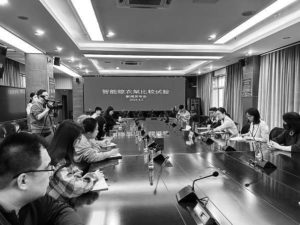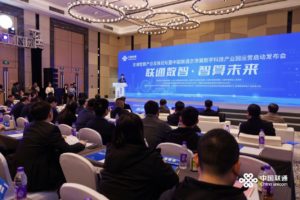Pay attention to safety! GoodWe released the industry’s first “Photoelectric Building Safety White Paper”

[ad_1]
“The 14th Five-Year Plan” Building Energy Conservation and Green Building Development Planpropose: By 2025, new buildings across the countryPhotovoltaicInstalled capacity above 50GW, buildingPhotovoltaicIntegration is the general trend of the industry.
However, in buildingPhotovoltaicAt the same time of vigorous development, due to the rapid development of the industry and different standards, related construction safety issues have attracted widespread attention.Globally, some buildingsPhotovoltaicThe disaster accident occurred in the scene caused great property loss and personal safety threat.
GoodWe’s long-term deep focus on architecturePhotovoltaicFor safety issues, engrave safety responsibilities into the corporate DNA, provide users with sustainable building integration solutions, and let high-efficiency power generation, safe and green photovoltaic buildings accompany thousands of households. On March 6, GoodWe launched the GOODWEEK global live broadcast event and released the “White Paper on Photoelectric Building Safety” (hereinafter referred to as the white paper).
Jointly edited authoritative cooperation in the building photovoltaic industry
In order to make the industry fully understand the design scheme and related technical requirements of photovoltaic buildings, GoodWeChinaChina National Inspection and Testing Holding Group Co., Ltd. (hereinafter referred to as CTC National Inspection Group) and TÜV Rheinland (hereinafter referred to as TÜV Rheinland) jointly completed the “White Paper on Photoelectric Building Safety”.
PhotovoltaicElectrical fire and building structure safety are constructionPhotovoltaicOne of the top considerations for green building.GoodWe cooperates with CTC and TÜV Rheinland on the safety of building structuressexAble to test and verify.Such as building materials fire rating and wind resistanceEffect,according tonationStandard GB8624 Building materials and products burningsexable to grade andnationThe standard GB/T36584 roof tile test method conducts fire and wind resistance tests on photovoltaic building material products.
For electrical safety, the white paper analyzes common solutions on the market, such as DC arc detection and component rapid shutdown technology; for structural safety issues, the white paper analyzes the structural enhancement, waterproofing and anti-corrosion of products on the market from the perspective of optoelectronic building materials technology. wind solution.
In the multi-party cooperative exploration, the optimal solution was obtained: adopt intelligent measures, combine DC arc detection technology and component-level rapid shutdown technology to prevent electrical fires, and select buildings with structural safetyPhotovoltaicIntegrated products, improvePhotovoltaicSafety prevention and control of water in green buildingsflatIt is imperative.
Outline the overall solution for photovoltaic building safety
The purpose of the white paper is to analyze the possible safety risks encountered by photovoltaic buildings and the existing security solutions, and set up a new evaluation standard for the industry, so that owners can choose their own photovoltaic building materials as a reference.
On the basis of the existing specifications, GoodWe formulated a more complete industry standard in combination with actual construction, and coordinated the research of professionals on the safety of photovoltaic buildingssexand directional train the corresponding on-site construction personnel, pay more attention to all aspects of design, construction and acceptance, and ensure the system safety of photovoltaic buildingssex.
White Paper Outline
1. Safety risks faced by photovoltaic buildings
At present, the pain points in the development of the photovoltaic construction industry include structural safety hazards such as fire and water leakage, and electrical safety issues.PhotovoltaicThe standards combined with architecture are still incomplete.
2. Common solutions in the industry
The electrical part includes DC arc detection and rapid shutdown technology; the photoelectric building material technology part includesPhotovoltaicStructural reinforcement, waterproofing solutions and windproofing solutions for products.
3. GoodWe professional solutions
DC arc detection technology: AI fusion deep learninghabit/Powerful data acquisition capability/Quickly cut off the power supply within milliseconds; Quick shutdown technology: ultimate safety/Multi-scenario adaptability/Friendly installation; ArchitecturePhotovoltaicIntegrated technology: achieve Class A fire protection and Class 15 strongtowerWind resistance test.
Four,sexCapability Verification and Technical Rating
Through cooperation with CTC National Inspection Group and TÜV Rheinland, GoodWe’s DC arc detection and rapid shutdown technology have reached the highest three-star evaluation standard; the Rising Sun series for civil buildings, and the Galaxy Lightweight for industrial buildings A series of photoelectric building materials products can meet the highest three-star safety classification standard.
Industry Benchmark ConstructionPhotovoltaicSafety Rating Evaluation Criteria
At this stage, the formulation of standards is mainly dominated by the construction field, and construction andPhotovoltaicThe industry lacks communication and cooperation mechanisms, and fragmentation among industries is common.
Combining the existing standards and the development status and future direction of photovoltaic buildings, the white paper formulates safety classification evaluation requirements for photovoltaic buildings, as follows:

GoodWe insists on accumulating in power electronics technology, optoelectronic building materials, energy storage technology, smart energy management technology, etc., continues to complete technological breakthroughs, constantly explores industry-leading technologies, and opens up the buildingPhotovoltaicIndustry barriers, promote the establishment of industry norms and standards, help every building generate electricity, and strive to become the main force in promoting global energy transformation!
[ad_2]
Source link








